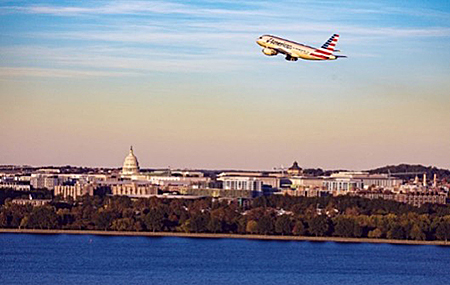A Climate for Change
Embracing the Environment
By Rick Domingo, FAA Flight Standards Service Executive Director

It’s a common human characteristic to avoid choices that require us to change. We tend to put our activities on autopilot and turn our attention to other things, often not noticing the changing circumstances that would compel us to change course. It may sound like I’m setting the stage for another essay on VFR-into-IMC accidents but the topic this time is the increasingly urgent need to address the causes of climate change.
No matter where you live, you’ve probably experienced some impact of climate change. You might have found yourself close to the unprecedented wildfires making headlines last summer. If you live in Texas, you might have shivered through the worst freeze in memory. I could go on, but you get the idea.
Sustaining Our Future
Because of its reliance on fossil fuels, the transportation sector, including aviation, has played a role in bringing us to the present challenge. But that also means that the transportation sector can — and must — play a role in finding and implementing solutions. To that end, earlier this year, President Biden announced a new target for the United States to reduce greenhouse gas pollution by 50–52% of 2005 levels by 2030. This target calls for cutting carbon pollution from the transportation sector in a number of ways, to include working toward very low carbon, new-generation renewable fuels for aviation.
On that subject, you have probably heard about the long and continuing work to find a replacement for the 100LL fuel that powers much of the existing GA fleet. We’ll provide an update on this work, known officially as the Piston Aviation Fuels Initiative (PAFI). But we will also take a look at exciting new technologies like electric aircraft. It’s likely to be awhile before you can board a commercial airliner with electric propulsion. Happily, though, the size and diversity of the GA sector enables it to serve as both a seedbed and a testbed for all kinds of innovative ideas and technologies that eventually find their way into larger applications.

Beyond their benefit in carbon reduction, technologies like some electric aircraft can contribute to the environment through noise reduction. Technology has lowered the source noise of aircraft over the years. In Washington DC, where Reagan National Airport is conveniently close to the city, I can remember a time when the noise of departing (or arriving) aircraft forced every outdoor conversation into a stop-and-start staccato rhythm. It’s a lot better now but noise concerns are also among the biggest threats to the viability of our nation’s airports. We need to do better. You might not have ready access to a whisper-quiet electric GA airplane, but we’ll review some of the ways you can lessen the noise for airport neighbors.
We can’t consider aviation and the environment without mentioning wildlife. Right from the start, pilots learn that there are rules against flying too low over certain parks and wildlife areas. But you may be more familiar with the risk of wildlife encounters of a different nature. Even with airport fencing, deer and other animals can create collision hazards for pilots operating at GA airports. Aerial collisions between our metal birds and our feathered friends are not uncommon either. To refresh your knowledge, this issue of FAA Safety Briefing will review risk mitigation measures and reporting protocols for wildlife encounters.
Respecting Mother Nature
Those who fly, whether as passengers or pilots, are privileged to see our planet with no boundaries. We see its beauty, and we can also see the damage we do to the environment. Now more than ever, the FAA seeks to advance aviation in an environmentally responsible and energy efficient manner. You have a role to play too, and you will find plenty of information in this issue on specific steps you can use to make your own aerial activities environmentally friendly.
Reprinted with permission from FAA Safety Briefing. Visit the Flight Safety Briefing website: https://www.faa.gov/news/safety_briefing



